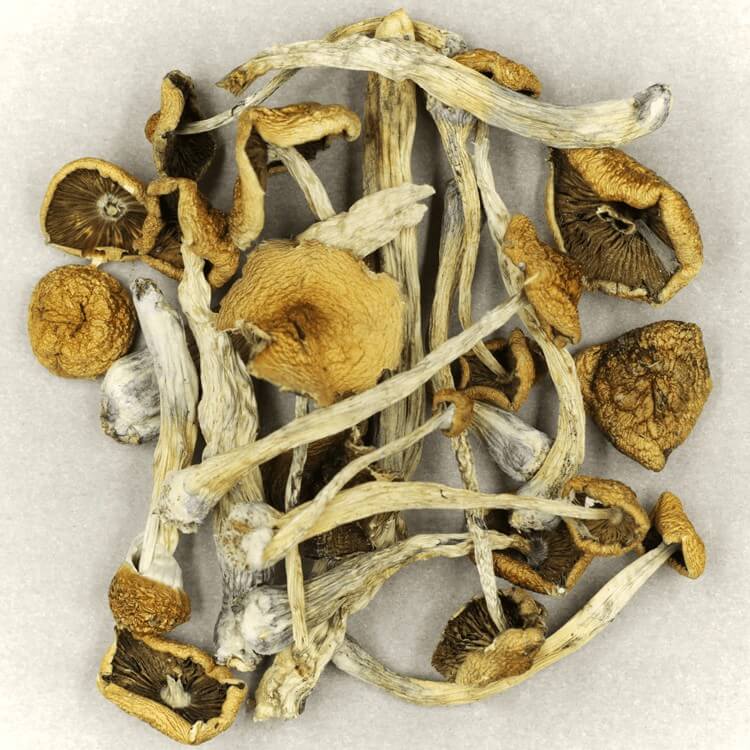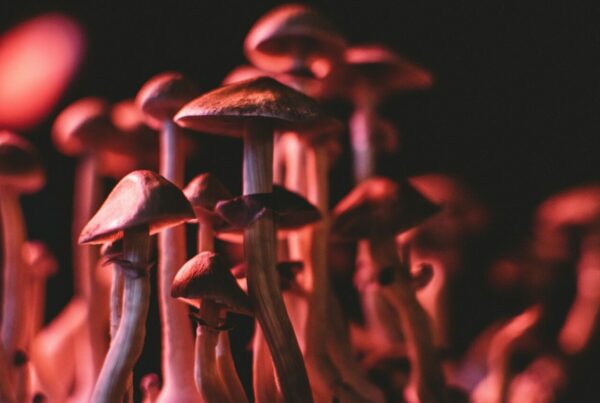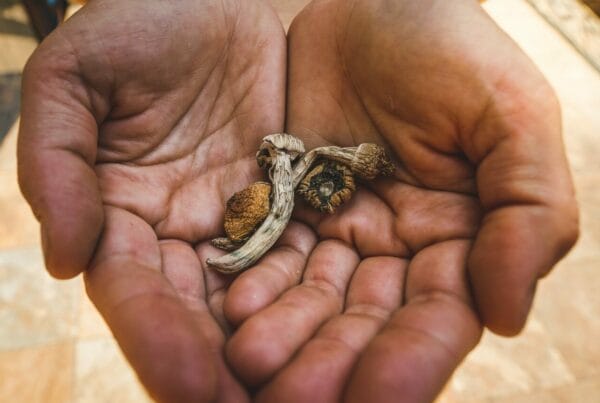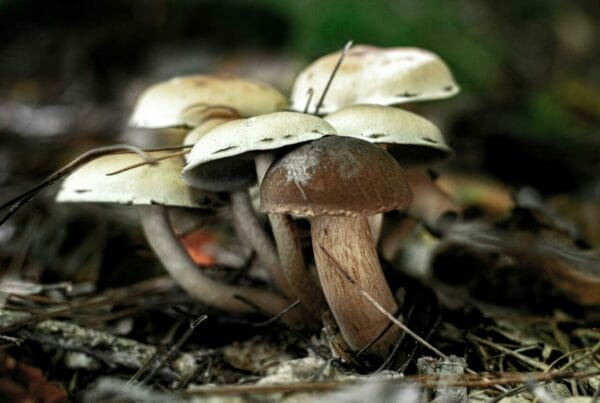Once deemed as merely a myth, the potency of Psilocybe mexicana is now a subject of extensive scientific research. Consistent discoveries about its therapeutic potential are progressively gaining recognition in the medical community. Experts are optimistic about this emerging field and are diligently working to define safe dosages for medicinal purposes.
Key Takeaways
- Researchers are utilizing advanced techniques like liquid chromatography and tandem mass spectrometry to assess mushroom potency.
- Psilocybe Mexicana, along with other mushroom varieties, is undergoing clinical trials to evaluate its potential medicinal applications.
- The diverse genetics of magic mushrooms play a key role in creating an accurate dosage guide.
Psychedelic Mushrooms: Transitioning from Mystery to Medical Breakthroughs
In the past, only a few ailments were believed to benefit from Psilocybe Cubensis. However, current research on psilocybin is revealing a wealth of previously unidentified medicinal properties.
Researchers are now harnessing the potential of Psilocybe Mexicana and other potent strains for comprehensive studies and clinical trials. Regardless of whether the research is conducted in vivo or in vitro, this strain effectively exhibits the true effects and benefits of the fungus species.
The Rise of Psychedelics in the Market
Once shrouded in mystery, the continuous developments and revelations in the field of psychedelics are capturing increasing public attention, especially among those seeking therapeutic alternatives. Conventional treatments for mental health conditions often leave much to be desired, leading individuals to explore more effective options.
This is where magic mushrooms come in.
Psilocybin, found in these fungi, has shown potential in treating a range of mental health conditions such as depression, alcohol addiction, anxiety, compulsions, tics, chronic pain, among others.
Currently, clinicians are experimenting with innovative methods to accurately determine optimal dosages for safe patient administration. In a remarkable achievement, a research team at the University of Texas has created a model to measure psilocybin and psilocin concentrations.
The potency of magic mushrooms can indeed be clinically quantified.
Mexicana’s Distinctive Features
Scientists have conducted extensive research on Golden Teachers, Blue Meanies, and B-Plus. However, to enhance our comprehension of safe magic mushroom use, it’s crucial to investigate other species.
The Mexicana species has gained attention in research circles, not merely due to its status as one of the oldest species, but also because its relatively mild potency may better conform to the standards of medicinal drugs.
Despite the Mexicana strain’s lower potency compared to other species, it can still emulate the effects of more mainstream strains. As the practice of microdosing gains traction among patients, this strain becomes an increasingly viable choice.
It exhibits stable levels of psilocybin and psilocin, akin to other strains. So, what makes it a preferred choice over similar strains? Its rich historical and anthropological importance provides the explanation.
Delving Into a Rich “Mexican” Legacy
In bygone times, psilocybe mexicana naturally flourished in moss. Indigenous populations held these psilocybin mushrooms in high esteem due to their myriad uses, often linked with mystic or supernatural occurrences.
Let’s focus on Mexican mushrooms. Over 2000 years ago, the inaugural documented use of these mushrooms was by the inhabitants of North and Central America. The Aztecs, an ancient civilization, referred to these mushrooms as the “food of the Gods,” or “teonanácatl” in their vernacular.
If the Aztecs were present today, they would vouch for the transformative, emotionally impactful, and mentally balancing effects of the Mexicana—despite not being familiar with these contemporary terms.
Despite various cultivation techniques, this mushroom has successfully retained its natural psilocybin levels, underscoring its authenticity. This genuineness is a universally recognized standard that researchers and institutions engaged in psychedelic research highly esteem.
Innovative Techniques for Psilocybin Content and Potency Assessment
A collaborative team of ten researchers from the University of Texas at Arlington and other research entities have devised a novel method to evaluate the potency of psychoactive compounds in mushrooms. This advanced measurement framework integrates liquid chromatography and tandem mass spectrometry.
Presenting two groundbreaking methods:
- Liquid chromatography is a technique that separates and analyzes different chemicals within a mixture. This process is used to identify the active chemicals in mushrooms. A liquid sample is passed through a column filled with a solid element (the stationary phase). As different chemicals interact in unique ways with the stationary and mobile phases, they separate at different rates while moving through the column.
- Spectrometry is a field of study focused on the interaction of matter with electromagnetic radiation across diverse wavelengths. Different substances can be identified and measured based on the specific wavelengths of light that their molecules absorb and scatter. This method enables the determination of the electronic, vibrational, and rotational states of the chemical.
This methodology was used on five different strains of magic mushrooms. The analysis revealed that the combined average levels of psilocybin and psilocin across these strains ranged from 0.879 to 1.36, surpassing several other strains, including Bull Run and Cambodian. The researchers confirmed the accuracy of their study by cross-verifying their results with independent labs.
The congruence of findings between the two labs further established the reliability of their testing process in accurately determining the potency of the mushrooms.
If validated by experts, this could pave the way for novel techniques in the existing psychedelic strength test methods, acting as an additional safeguard to prevent inaccurate dosage determinations.
Extending Research to Additional Species
Expanding research to other species is advantageous. It not only enhances our understanding of the health benefits associated with different strains but also provides preliminary data on the effects of less potent mushrooms.
Furthermore, it aids in educating individuals about the influence of different dosages on the psychedelic experience. By comparing Mexicans with more potent strains such as Psilocybe Cubensis, researchers can discern how varying concentrations of active compounds can impact therapeutic outcomes.
For example, the Blue Meanies strain yields more potent hallucinogenic effects, which could be potentially useful in treating conditions like depression. In contrast, less potent strains are suitable for microdosing or more subtle applications such as mood enhancement or focus improvement.
Genetic Diversity Leads to Safer Treatments
It’s worth noting that different mushroom cultivars or varieties have unique genetic profiles and
Psychedelic mushrooms vary in their potency, chemical composition, and the effects they produce. Understanding these differences allows healthcare professionals to select the most suitable type for specific medical applications and personalize dosages to meet individual requirements, thus reducing risks and enhancing benefits.
Take for instance, Psilocybe Semilanceata (Liberty Caps) or Psilocybe cyanescens. Their unique alkaloid profiles may be beneficial in addressing anxiety. On the other hand, certain synthetically grown mushrooms might be better suited for dealing with substance abuse or compulsive behaviors. Such diversity enables the development of personalized treatment plans with improved safety and efficacy.
From this, we can infer that the genetic diversity found in hallucinogenic mushrooms, along with advanced methods of potency assessment and identification, play a vital role in formulating safer medical interventions.
Enhanced Safety in Medical Use
Let’s contemplate the potential benefits of safer dosing.
- Decreased risk of overdose: Accurate dosing reduces the likelihood of overdose, emphasizing the importance of clear product labeling to avoid consumer misunderstanding.
- Augmented predictability: Accurate dosing allows individuals to better anticipate the effects or experiences they may encounter during their trips, reducing overpowering sensations and anxiety, thereby enhancing patient satisfaction.
- Uniform measurement: More accurate dosing encourages a standardized metric, enabling people to easily refer to charts for potential effects.
Experience the Advantages of Precise Dosage with Advanced Potency Tests | Buy Magic Mushrooms Online at 3 Amigos Canada
With the continuation of these two advanced techniques, unpredictable effects will be a thing of the past. Combine this with smart online shopping at 3 Amigos Canada. We offer dried mushrooms that promote a tranquil, relaxing psychedelic journey without intense psychoactivity. Buy psychedelics online in Canada via 3 Amigos Canada.
Frequently Asked Questions
Are Big Mexicans and Psilocybe Cubensis the same?
No, Big Mexicans and Psilocybe Cubensis are distinct strains of mushrooms, so it’s crucial to not confuse them. Big Mexicans have a higher compound isolation, ranging from 0.5% to 1%, which makes them considerably more potent.
Psilocybe Cubensis often differ in appearance from others, typically having a bell-shaped cap as opposed to the conical shape commonly seen on others.
What is the highest concentration found in Mexican mushrooms?
The concentrations of both psilocybin and psilocin in Mexican mushrooms can reach a maximum of 0.25%. While these levels are comparably low, similar to the Golden Teacher strain, they can still induce profound psychedelic experiences that may potentially provide health benefits.
What is the safe dosage for medical use?
Usually, a dosage ranging from 1 to 2 grams is recommended. However, this can fluctuate depending on factors such as consumption methods, individual metabolism, and the specific potency of the strain. Some individuals prefer to take sub-threshold doses, which range from 0.05 (50mg) to 0.025 grams (250mg), to mitigate the hallucinogenic effects.





